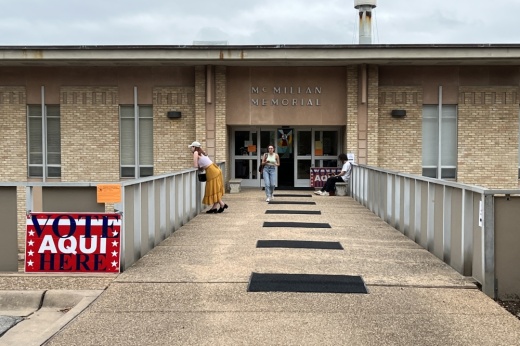Austin voters will have a smaller selection of polling places to turn to in the city's December runoff elections for mayor and three City Council seats, and some officials and community members are seeking to ensure more options are available in future contests.
After higher-profile races up the ballot are decided, local runoffs typically see much lower turnout than in general elections. And Austin's turnout this November was already slightly below past years despite a slate of federal, state and local positions on the ballot, including several open seats at City Hall.Alongside the turnout trend, the number of polling places for both early and election day voting is also reduced. After Travis County commissioners heard an update on polling places for Austin's December runoff Nov. 18, City Council set a final list Nov. 21. The number of early voting locations was reduced by more than half and the number of election day sites cut from nearly 170 to 86 for the runoff.
As the list was finalized, several community members called attention to the reduced number of polling places that will be available—especially around college campuses. College students turned out to voice their concerns at a county commissioners meeting last week, and Jen Ramos, political analyst for the voter engagement group Jolt Action, asked council members to avoid "disenfranchising" tens of thousands of younger voters based around their institutions Nov. 21.
Austin Community College, Concordia University, Huston-Tillotson University, St. Edward's University and The University of Texas all lost polling places on or near their campuses for the December runoff after having them in place earlier this month. Each institution's fall semester will have wrapped up by the runoff election on Dec. 13, but they will still be in session through some of the Dec. 1-9 early voting period.
“It goes without saying that our city has a very young population, yet when we look at the allocation of polling locations within Travis County there is a disparity in equity among how we allocate polling locations among the concentrations of youth," Ramos told council members.
One example highlighted during the meeting was St. Edward's, which will not host a runoff voting site after having an election day site added in November. The decision to cut that location was made between the university and the county, City Clerk Myrna Rios said, given their view that a polling location would be "pointless" with students on winter break and a tight timeframe to clear federal polling place requirements.
The offices of the city and Travis County clerks, responsible for each entity's election administration, shared differing views on how the selection process played out citywide.
"All coordination goes through each county. However, we work very closely with Travis County and collaborate with them to secure city of Austin facilities. Noncity facilities are coordinated by each county, and it is at the discretion of each entity to serve as a polling location during early voting and/or election day," city spokesperson Yasmeen Hassan said in an email.
A county clerk representative said the final say on voting locations lies with Austin.
"This is a city election, so it’s up to the city to determine locations. We give suggestions, and they decide which locations and how many to use, and some locations decline use for a variety of reasons," said Victoria Hinojosa, communications manager for the clerk's office.
The situation prompted several council members to ask that campuses receive more consideration during election planning in the future.
District 4 Council Member Chito Vela said officials should make an effort to ensure voting access for thousands of students, especially in areas with both mayoral and council runoff elections on the ballot, and District 9 Council Member Kathie Tovo said the city should better coordinate with members of its College Student Commission on the issue. District 2 Council Member Vanessa Fuentes asked for campus voting sites to become a local standard.
“We should be having multiple voting locations at all of our universities across the city," Fuentes said. "For our next election, I would hope that when we are approving the voting locations that we see equitable access throughout our city for our students.”
A lack of access to voting sites could have an effect during runoffs when a smaller number of votes could be the deciding factor in tight races.
Data from the county clerk shows the voting precincts that include UT, St. Edward's, Huston-Tillotson and several ACC campuses all favored Celia Israel in the mayoral contest. That trend could be affected if students do not return to cast a runoff vote, decide not to travel to a farther polling place or are away on winter break on election day.
Those campuses are also hubs for thousands of students living in areas with individual council runoffs. St. Edward's is located in District 3; UT is based in District 9; and ACC has campuses in multiple districts—and each of their precincts favored one of the finalists in their council race. Huston-Tillotson's precinct broke for incumbent Council Member Natasha Harper-Madison, winner of the now-decided District 1 race.
Hays and Williamson county voters will also have access to a handful of polling places in those jurisdictions as Austin's mayoral election is a citywide contest, although the majority of the city's population lies within Travis County. Hays County will offer one early site and two election day polling locations in the runoff, while Williamson County will run one early voting site and three on election day.





